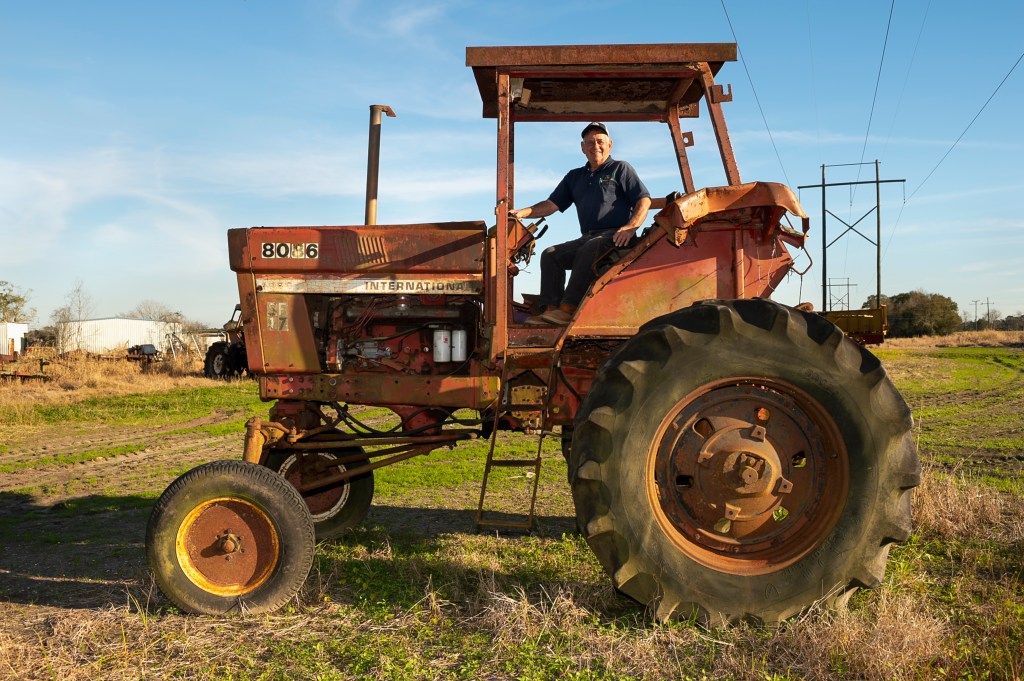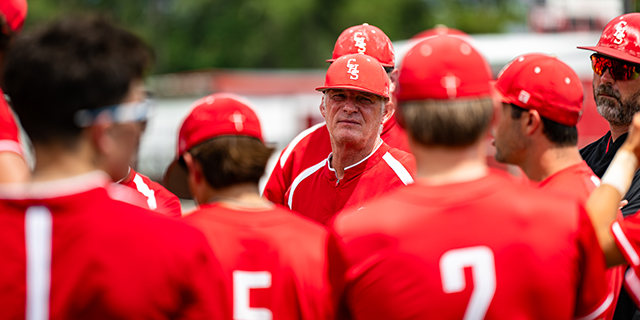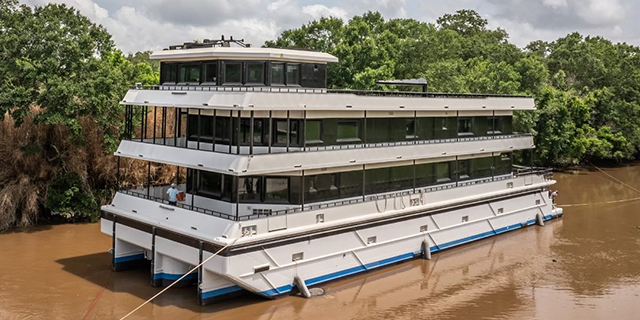King Sucrose LXXVII
Published 7:00 am Tuesday, January 29, 2019

- Donald Segura and his International 1086 tractor which is awaiting restoration. Lee Ball Photography
With harvest season in full effect, tractors rolling and large trucks hauling their treasures to the mill serve as an ever-present reminder of just how heavily the Acadiana region is impacted by the state’s largest cash crop – sugar. Of course, you don’t have to remind sixth generation sugar cane farmer, Donald Segura, the New Iberia native who has also been honored as the Louisiana Sugar Cane Festival’s King Sucrose LXXVII.
If Cajun French is his first language then farming could be considered his second. With more than 60 years of sugar cane farming under his belt and approximately 5,000 acres to tend, Segura has seen his fair share of harvests come and go. Although it’s always been his primary focus, those harvests have not been limited to sugar. At one time, Segura also farmed okra, peppers, rice, wheat and soybeans as well as milked more than 100 cows twice daily. If that skill set is not impressive enough, the 77 year old has also begun milling cane syrup and has even taken up crawfishing after acquiring a 200-acre crawfish pond a few years ago.
Trending
Life has not been solely about farming though and Segura also found time to be a husband, father to his three sons, drive a school bus, run a community grocery store, travel with his softball team and serve on the American Sugar Cane League board of directors for 12 years as well as in public office for two and a half decades. For those of us who are only human, successfully managing such a schedule is baffling. When asked how they possibly found enough hours in the day, Segura’s wife, Catherine, chimes in, “We worked ‘can’t to ‘can’t.’ You start in the morning before you can see and you go into the night when you can’t see anymore!” Segura laughs, “Yeah, I did it a long time – that ‘can’t’ to ‘can’t.’ But, I enjoyed every minute and I’d do it again.” Without question, it was that work ethic and passion that allowed them to find success both inside and outside of the field.
With such an impressive history, Segura has become a fixture in the Louisiana sugar cane industry and it is no surprise why he has been given the distinction of this year’s King Sucrose. As a lifelong sugar cane farmer, raised by sugar cane farmers, Segura spent his entire life attending the festival as well as volunteering on almost every level, especially with the 4-H Livestock Show. In fact, it was at one such show he and his wife first met as teenagers and an organization they have remained heavily invested in ever since. When asked what being named King Sucrose meant to him, he responds, “The previous guys, the farmers I knew who were King Sucrose, it’s a great pleasure to be on the same platform as them and it’s an experience I’ll remember for the rest of my life.”
Becoming a sugar cane farmer was a dream come true for Segura and he is grateful to have been able to watch the industry blossom over the years with the help of developing technology. “I just wanted to be a sugar cane farmer. That’s what I wanted to be because my father, my grandfather, my other grandfather all were, but they were just small,” he states. “Right now, we haul more in an hour than my dad would haul in a year! The technology got a lot better so we got bigger and bigger.” Among other things, more powerful tractors, harvesters and combines made it possible to grow the 100 acres he began with into the thriving agricultural business he and two of his sons manage today. However, in respect of those years past, Segura has begun collecting and refurbishing antique farming equipment. Although not the biggest collection in the area, it is one filled with meaning and every piece tells a story. He was happy to share those stories with us below.
Q: WHEN DID YOU BEGIN COLLECTING?
Trending
A: I was a little bit older. I didn’t have much time because I was still trying to play softball. So, I guess I must’ve been in my early 60’s when I started reminiscing and going backwards. You know, these things are what made me so I need to see if I can re-fix them.
Q: WHY DID YOU CHOOSE TO COLLECT OLD TRACTORS?
A: Just the memories, I guess. I used to love the dairy, but I can’t go back and pick up that cow because she’s dead. But that tractor is around and at that time you’re getting larger and larger and you’re making money and not thinking, ‘That’s an important piece of equipment.” But, now, I realize this is what made Segura Farms so let me try to take it back.
Q: SO HOW MANY PIECES DO YOU HAVE?
A: Just six. Right now we’ve basically got Case International and John Deere. I’ve got a couple Allis Chalmers, older tractors that my grandson and me are kind of refurbishing.
WHAT’S YOUR FAVORITE PIECE OF EQUIPMENT?
A : One of my first tractors I bought was a 4020 John Deere and last year in August or September I got rid of the tractor. The Stines and my wife and my kids, they refurbished the tractor and they gave it back to me in August and surprised me with it. It’s all brand new: freshly painted, new tires and all that. It was one of the first tractors that I ever owned. That’s what made me, that tractor there. It was an important tractor.
Q: ANY OTHER SIGNIFICANT PIECES?
A: I had a D21 Allis Chalmers. It was a big, massive tractor at the time. But, to me, that’s the tractor I’d depend on to pull the cane out of the field to the road. Then the 4020 could take it. I needed that tractor. But I think that would be the one I’d want. Without that tractor there were a lot of times some of the cane would have stayed in the field.
Q: HOW DO YOU MAINTAIN THE EQUIPMENT?
A: We usually maintain them ourselves. When we’re finished grinding, we just take them all in the shop and start fixing them all up because they all have dents or something wrong with them. In March, we start putting fertilizer and all that, and then we bring them in again before we start planting in August.
Q: SO ALL OF THESE ARE STILL IN USE?
A: Oh, yeah. It’s like an old person. They just do a little amount of work. Like the 3240’s, the John Deere’s that were mostly made in the 70s and 80s, we still have a few of them. We use them to carry the wagon and plant. They aren’t air conditioned, but they still run. They’re 40 years old, but you can still get parts for them compared to the oldest ones from the 40’s or 50’s that it’s harder to find parts for.
Q: WHAT DO YOU FIND MOST SATISFYING ABOUT COLLECTING THESE TRACTORS?
A: It shows where I come from – from the beginning to the end. For the 60 years I’ve been doing this I think I’ve seen close to everything that could happen. In the 50s and 60s, I don’t want to say the sugar cane farmers were backwards but that was the technology in those days. Now, in my lifespan, I think I saw more than anybody else did. It’s just completely different than my early days. Now, you’ve got one farmer working 5,000 acres and in the old days you had 50 farmers working 5,000 acres, because the equipment wasn’t good. I remember when I was a teenager; the tractors were small and when I started farming, like I said, that 4020 was a big tractor. And then, all of a sudden, a few years later, that D21 was up. After that, you’ve got these big four-wheel drive tanks. We started off with a one-row chopper behind one tractor. Now, we run 5 rows at a time behind a big 350 horsepower tractor. That all changed completely.





